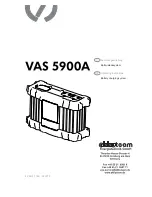
36
The fundamental rule is that Lithium-based batteries may ONLY be charged using
special chargers, and the charge program must be set up correctly in terms of final
charge voltage and capacity for the battery type in use. The charge process is
fundamentally different to that required for Ni-Cd or Ni-MH batteries, and is termed
a constant current / constant voltage method. The charge current required varies
according to the battery capacity, and is set automatically by the charger. Lithium
batteries are usually charged at the 1C rate (1C charge rate = half capacity as charge current. Example:
battery capacity 1500 mAh: 1C charge current = 1500 mA = 1.5 A).
Because some types can be charged with upt to 2C or 4C charging current, the charging current and
the capacity of the battery must be set seperately. When the battery on charge reaches the specific final
voltage which is appropriate to the battery type, the charger automatically reduces the charge current
in order to prevent the battery exceeding the final permissible voltage. If the battery manufacturer states
a charge current lower than the 1C rate, then the capacity (charge current) must be reduced accordingly.
We recommend the use of the balancer connector, which ensures that your Lithium batteries are
charged optimally, and therefore increases safety and their useful life.
Problems caused by mistreating batteries:
It is very dangerous to overcharge Lithium-Ion batteries, as they tend to react by gassing, overheating
and even exploding. If the final charge voltage of 3.6 V / cell (
LiFePO
4
), 4.1 V / cell (Lithium-Ion) or 4.2
V / cell (Lithium-Polymer and Lithium-Manganese) is exceeded by more than 1%, the lithium ions in the
cell start to change into metallic lithium. This material reacts very violently with the water in the electrolyte,
and this can result in the cell exploding. On the other hand it is also important to avoid terminating the
charge process before the final charge voltage is reached, since this reduces the effective capacity of
the Lithium-Ion cell markedly. Stopping the charge at just 0.1 V under the threshold means a capacity
loss of around 7%. Lithium batteries must not be deep-discharged, as this leads to a rapid loss of
capacity. This effect is irreversible; it is absolutely vital to avoid discharging the batteries to below 2.5 V
/ cell.
Caution: the cell type, cell capacity and cell count set on the charger must always be correct for
the battery to be charged; if you make a mistake, the battery could explode and burn! Never
connect a Lithium-based battery to the charger if it features an integral charge circuit! Always
place your Lithium batteries on a non-flammable surface for charging.
charge time
current
voltage
13. Lithium programs
These programs are
only
suitable for charging and discharging LiFePO
4
batteries with a voltage
of 3.3 V / Cell, Lithium-Ion batteries with a voltage of 3.6 V / cell, and Lithium-Polymer and
Lithium-Manganese batteries with a voltage of 3.7 V / cell. The outstanding feature of Lithium
batteries is their much higher capacity compared to other battery types. However, this important
advantage is offset by the need to adopt different handling strategies: they must be charged and
discharged using specific methods, otherwise they will be damaged, and can be dangerous. The
directions in these instructions must be observed at all times when handling these batteries.
Specific information and safety notes will also be found in the battery manufacturer’s technical
information.
Lithium
MANUAL-
program
Lithium
type
select
MODE
MODE
















































